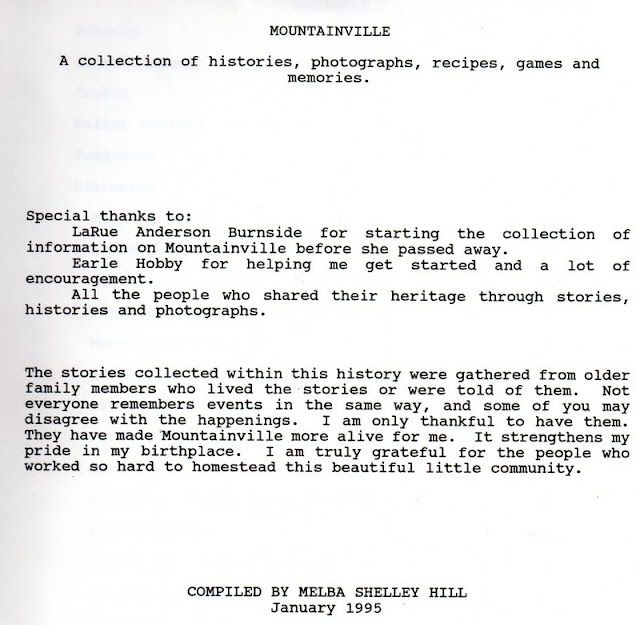Once again we have a former mayor with no formal biography readily available. No descendants locally available to glean information from. It anyone out there can fill in the blanks, a very large one ________,please do. So we have collected tidbits of information from Hilda's History of Mt. Pleasant and also from Utah Digital Newspapers, which is a wonderful resource.Family Search has a number of Ed Johnstons so we cannot be sure whose his parents were and where he came from. We do know he was the Mayor of Mt. Pleasant. We know that he went on to be a Utah State Senator. We know that he owned and operated Johnston's Drug Store. And we know that he was once President of the Utah Pharmaceutical Association. He joined the Royal Arch Masons of Mt. Pleasant, and was scribe, as well as Worshipful Master. He was also a veteran of the Spanish American War. He must have been a very influential and well liked gentleman.
The following are the news clippings we have found on Ed Johnston:
The above article appeared in the Manti Messenger on
September 9, 1938.
The above was found in the Manti Messanger February 14, 1941
Items about Ed Johnston in History of Mt. Pleasant by Hilda Madsen Longsdorf
P. 13:
Mount
Pleasant is pleasantly located in the northern part of Sanpete County, Utah,
about one hundred miles southeast of Salt Lake City. It is situated on Pleasant
Creek, one of the tributaries to the Sevier River, and about midway between the
Wasatch plateau on the east and the Sanpitch River on the west. Its elevation,
as registered on a standard disk, set in the northwest corner of the west wall
of Johnston's drug store, S. W. corner of the intersection of State and Main,
is 5,923.97 feet, and as registered in standard disk, set in stone head wall of
irrigation ditch, ninety feet southwest of D. & R. G. Depot and thirty feet
west of center of railroad track is 5,843.67, showing a gentle slope which
gives excellent drainage. The United States census of 1930 shows its population
as being at that time 2628, with Manti 2240 and Ephraim 2076.
P. 199:
The
Sanpete County Council of Defense was organized as follows: J. W. Cherry,
chairman; Burke McArthur, secretary; Ed. Johnston, treasurer; Committee
chairmen, Finance, N. S. Nielsen; Publicity, ,Burke McArthur; Legal, J. W.
Cherry; Sanitation and Medicine, Ed. Johnston; Food supply and conservation, L.
R. Anderson; Industrial survey, Orlando Bradley; Labor, Christian Willardsen;
Military affairs, J. Morgan Johnson; State protection, H. R. Thomas; Survey of
man power, L. P. Brady; Woman's work, Mrs. G. W. Martin.
P. 201:
In
January of 1922, Ed. Johnston moved his drug stock into his new building,
corner of State and Main, and during the year, the Wasatch Academy completed
their two buildings, the gymnasium and the Infirmary.
P. 204:
February 12, 1936, Ray K. Bohne was appointed
postmaster. and after a short time, the office was moved to the Ed. Johnston
building.
P. 206:
The
new city hall was dedicated August 23rd. Following a parade, a program was held on the steps of the
building. Senator Ed Johnston presided. Invocation was offered by Daniel Rasmussen and the dedicatory prayer by C. W.
Sorensen, and an historical sketch was given by Mrs. S. D. Longsdorf.
P. 238:
1932-33.
Mayor, W. P. Winters; Recorder, Daniel Rasmussen;
Treasurer, Pearl Larsen; Councilors, H. P.
Olsen, four years;
Ed. Johnston, John Fowles, Willis N.
Madsen, E. W. Wall.
1934-35.
Mayor, Ed. Johnston; Recorder, E. W. Wall; Treasurer,
Pearl Larsen; Councilors, Willis N.
Madsen, four years; Henry
P. Olsen, John Fowles, Parley Hansen,
Daniel Rasmussen,
(21) Lawrence Winters.
P. 324:
(1935) A portion of the old fort wall was still
standing. James Wilson had a blacksmith shop on the corner where Mayor Ed
Johnston now has a drug store. Peter Matson had a shoe store and Lydia T.
Winters ran a millinery store. The Presbyterian Church was where the Mason
Lodge Hall is now. James Borg and Ole Clemensen had a harness shop near the
Beaumann home, and Abner Crane had a blacksmith shop near where the Crane home
is now.




















































